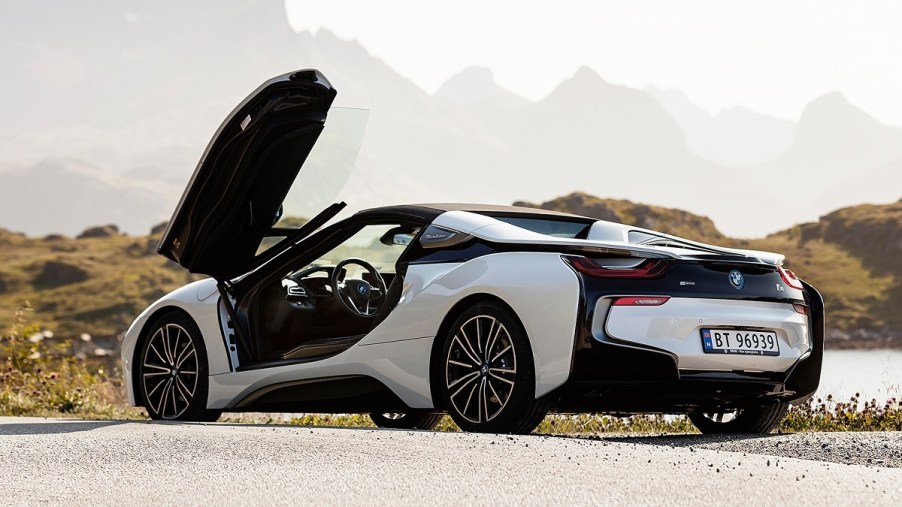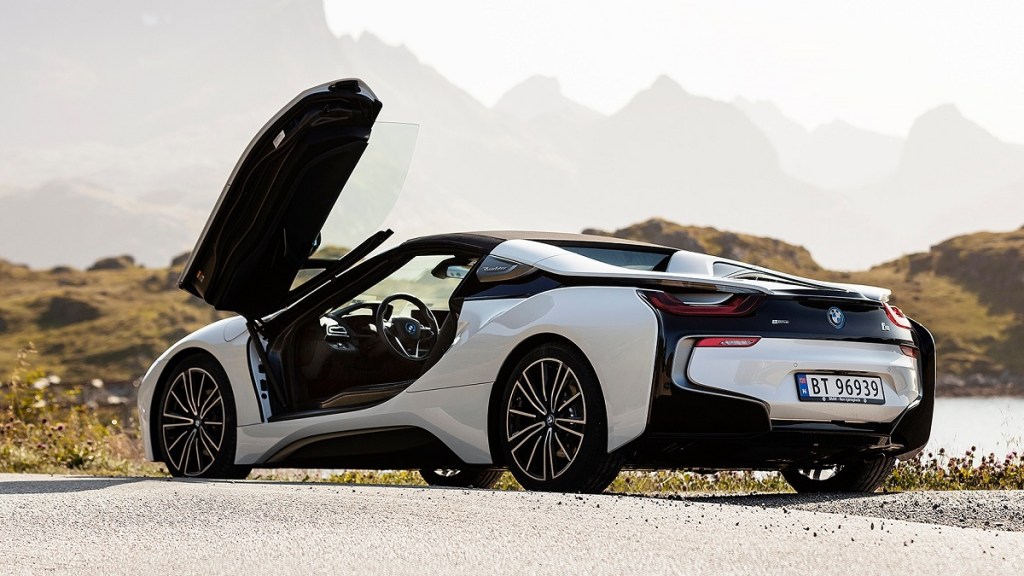
The BMW Feature Fit for Star Trek
BMW filed a new patent in the European Patent Office detailing new technology for virtual wing mirrors. BMW’s concept i8 used virtual technology and the U.K.’s Honda e and Audi e-tron have virtual mirrors. How is BMW’s new virtual mirror patent different?

How would BMW’s new virtual wing mirror patent technology work?
Right now most cars have standard side mirrors on the sides of cars, and a few cutting-edge cars have camera-based systems. These generally transmit a camera view onto a screen inside of the car. BMW’s new virtual mirror patent will be quite different, a combination of the two.
BMW’s new patent shows technology that will use cameras to capture images that wing mirrors typically show. Then, instead of displaying that image onto a screen, it will be transmitted onto virtual wing mirrors.
Virtual wing mirrors will be embedded into the glass of the front side windows, similar to where wing mirrors usually are. This will mean drivers won’t have to adjust to a new placement when checking their wing mirrors.
The new virtual wing mirrors could use electromagnetic radiation to transmit the pictures onto semi-transparent mirrors. Don’t worry about rolling down the windows and losing your virtual wing mirrors; they stay put, even when the windows are open.
What are the benefits of virtual wing mirrors?
New cars, especially electric ones, are all about being sleek and aerodynamic. After all, the distance you can travel before recharging depends on it. Virtual wing mirrors will cut down on the amount of drag in new BMW’s, thereby increasing range.
BMW’s new patent shows that the virtual wing mirrors can be used in other ways, too. They’ll be able to help you park, and relay the speed of passing cars to make it easier for you to change lanes (or not).
This isn’t the first time that BMW has teased the public with virtual mirror technology. Their 2016 concept i8 used side cameras to send images of the road to a center screen inside the car. It also used a screen instead of the traditional rear view interior mirror.
Both the UK versions of the Honda E and the Audi e-tron currently have their own versions of virtual wing mirrors
Virtual wing mirror technology isn’t currently legal in the U.S. It is, however, legal in the U.K. and other countries. This means that we’ve had a chance to see how it works, and it seems pretty good.
The U.K. version of the Audi e-tron currently uses video to capture images of the road. It then transmits those images onto OLED screens inside of the car.
While this mirror technology is certainly new and kind of cool, it can be an adjustment for drivers. The screen is in the center of the car, meaning that drivers used to looking to traditional wing mirrors will have to get used to looking inward, at the center of the car.
The Honda e also uses camera-based mirrors. The Honda e’s side mirror system uses two six-inch screens on either side of the dashboard.
When will BMW’s new virtual mirror patent become reality?
Well, that’s the tricky part. Although BMW has filed the patent, it doesn’t mean that they will definitely institute this virtual mirror technology. Even if BMW does decide to move forward with this technology, there’s no word on when we can expect to see virtual side mirrors (or if they’ll be allowed in the U.S.).


